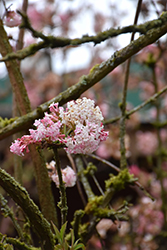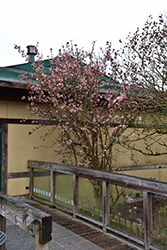It's all about ...
plants

Charles Lamont Viburnum
Viburnum x bodnantense 'Charles Lamont'
Height: 12 feet
Spread: 8 feet
Sunlight:
![]()
![]()
Hardiness Zone: 5a
Description:
Enjoy the sweet fragrance of this shrub, which will produce bright pink clusters of flowers on bare stems, in late winter or early spring; large open habit is perfect for the back of borders; flowers are largely sterile, very few berries as a result
Ornamental Features
Charles Lamont Viburnum features showy clusters of fragrant pink flowers at the ends of the branches from late winter to early spring, which emerge from distinctive cherry red flower buds before the leaves. The flowers are excellent for cutting. It has dark green deciduous foliage which emerges burgundy in spring. The serrated pointy leaves turn outstanding shades of orange and yellow in the fall.
Landscape Attributes
Charles Lamont Viburnum is a multi-stemmed deciduous shrub with an upright spreading habit of growth. Its average texture blends into the landscape, but can be balanced by one or two finer or coarser trees or shrubs for an effective composition.
This is a relatively low maintenance shrub, and should only be pruned after flowering to avoid removing any of the current season's flowers. It is a good choice for attracting birds to your yard, but is not particularly attractive to deer who tend to leave it alone in favor of tastier treats. It has no significant negative characteristics.
Charles Lamont Viburnum is recommended for the following landscape applications;
- Accent
- Mass Planting
- Hedges/Screening
- General Garden Use
Planting & Growing
Charles Lamont Viburnum will grow to be about 12 feet tall at maturity, with a spread of 8 feet. It tends to be a little leggy, with a typical clearance of 2 feet from the ground, and is suitable for planting under power lines. It grows at a medium rate, and under ideal conditions can be expected to live for 40 years or more.
This shrub does best in full sun to partial shade. It prefers to grow in average to moist conditions, and shouldn't be allowed to dry out. It is not particular as to soil type or pH. It is somewhat tolerant of urban pollution. This particular variety is an interspecific hybrid.
This plant is not reliably hardy in our region, and certain restrictions may apply; contact the store for more information.

